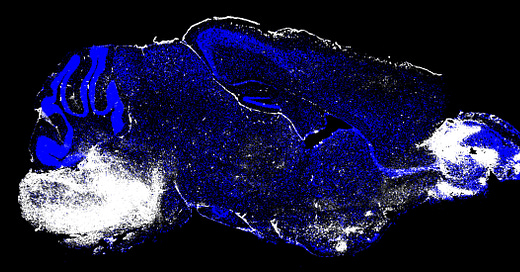Stasis and Extreme
The body is in a constant battle of desire. Our bodily regulation wants to keep temperature, fluid levels and salt concentration regulated and stable. This is called homeostasis. Whereas, the intellect longs for pleasure and struggle. Through our consciousness we incline towards the extreme, even pain is preferable to boredom.
The human animal is constantly seeking. The unpredictability of company, further variety in consumption and the simulation of risk-taking. The machinery of the body is offset by the insanity of the brainstem. The stomach tries to handle what is shoveled into the mouth, the lungs attempt to filter willfully inhaled carcinogens and the sexual organs are subject to all manner of foreign fluids. The body is screaming out for respite from the undying gauntlet of abuse thrown at it by an overly-aware accident of nature. Who in their right mind would design a creature that drinks poison because it makes them feel dizzy and eats that which causes uncomfortable burning sensations?
In this arms race the body, of course, has its own ways of dealing with such variety. These are both practical and performative. Chemically, stress, and the cortisol it releases “inhibits the prefrontal cortex and executive function, including impulse control and the ability to fully comprehend the consequences of our actions.”1 This allows for a frustration of the comparatively slow intellect and a reversion to animal impulse in dangerous situations. This is in tandem with the bodily management of surprise in the administration of adrenaline, which allows for sudden and unthinking bursts of muscle and cardio intensity. In life-threatening scenarios this relegation of “executive function” results in the feeling that ‘it all happened so fast’ and the feeling that one is outside themselves watching their own embodied reaction.
Performatively the body has a diverse range of pacifiers and signaling methods in the form of ‘body language’.
“Lip biting is a pacifier, usually seen when people are under stress or have concerns. We bite our lips because, after a certain age, it is no longer socially acceptable to suck our thumbs, and biting our lips stimulates the same nerves in the mouth.”2
The nerve endings of the lips are erogenous, they are very sensitive and play a primary part in our sense of bodily feeling. The sexual nerves are similar, and we would probably stimulate those in times of stress if it were socially acceptable. Actions, such as lip biting and sexual stimulation occur in phase, in frequency, in undulation. Hence why both are a repetitive pump back-and-forth and a squeeze lighter-and-harder.
“Twiddling our thumbs is a way to pass the time or deal with small amounts of stress. The repetitive nature of it is soothing to the brain.”3
The very act of sitting still is incredibly difficult for our consciousness to handle when it has control over action of the body. This explains why such a seemingly effortless act such as silent meditation is praised and admired to the same extent as a feat of great strength or endurance. Meditation hijacks our desire to be moving, striving, expressing and consuming with a temporarily imposed ascetic stasis.
Such things not only effect our internal regulation and mental perception, but also allow us to signal outward to others and, in turn, effect their bodily situation and mental perception: “The further apart our feet, the greater the territorial display”. ‘Body language’ has a performative effect which aims to signal strength to others and invoke an increase in their cortisol, either to defend or fight such an embodied proclamation of spacial power. But, also, this has an internal effect within the performer. Their own cortisol is lowered, their breathing slower and steadier and their pupils should dilate in a genuine impulse of relaxation. All of these complex physical and chemical processes happen automatically with a minor change in stature. In a strange irony this reduction of neurotic energy actually results in the reduction of unpredictable neurotic occurrences (for the most part) and serves to improve and protect the strength originally signaled from the bodily performance. “The breadth of a person’s stance is telling: Military men and police officers tend to stand wit their feet farther apart than say, accountants and engineers.”4
The performance of internal and external bodily control, of course, flows bidirectionally. The “palms-up display—Also known as the rogatory hand position” is a good example of the oppositely orientation, an expression of one in a subservient or pleading position. A “universal behavior of humility, compliance, or cooperation used by people who want to be accepted and believed”. The extremes of human power, driven by the consumptive consciousness, wrestles constantly with the “presentation of the palms” that is the imploration of stasis.5
Wilson, G. (2014). Your Brain on Porn: Internet Pornography and the Emerging Science of Addiction. United Kingdom: Commonwealth Publishing. p.92-93
Navarro, J. (2018). The Dictionary Of Body Language. Harper Thorsons. p.70
Ibid. p.128
Ibid. p.142
Ibid. p.124-125




